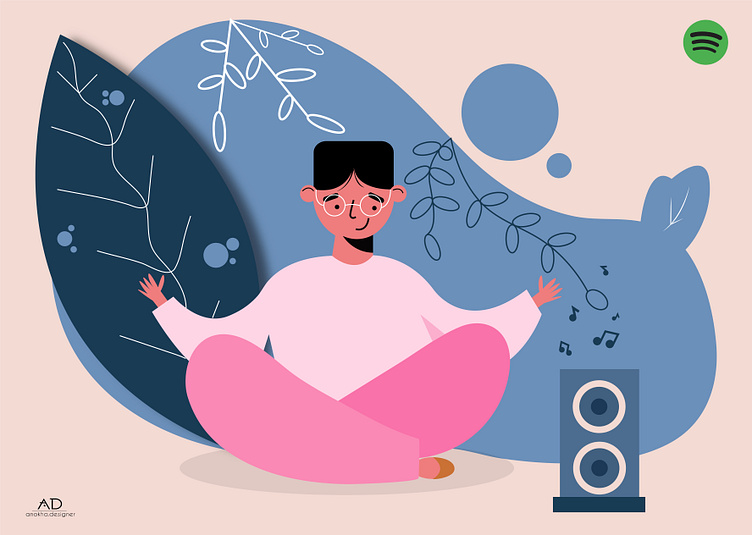FLAT ILLUSTRATOR
With your ideas in mind and references on hand (or phone), it is time to start sketching in your favorite sketchbook or drawing app. I like to start with thumbnails or small, quick drawings. They help me narrow down which layout I like best without worrying about details or overthinking.
From there, I make bigger sketches to refine the composition, dimensions, characters, etc. I’m not too worried about perfection at this point in the illustration process. After the sketching comes my favorite part: finding the perfect color palette. Colors are important since they help elicit emotion and enhance the message of the illustration. If I’m working with branding colors, I like to play around with their placement.
Don’t be afraid to experiment with opacity and tones. When I have the freedom to pick out the color palette, I create multiple thumbnails containing different variations of colors. Remember that this step is all about finding the right combination of complementary colors so be flexible and have fun with it.
There are hundreds of color palette generators to help you get started. My personal favorites are Colormind, ColorSpace, Coolors, and Paletton.It’s time to start building the illustration by blocking out the shapes. Whether I’m using Adobe Illustrator, Procreate or even a traditional medium like watercolor, this tends to be the most time-consuming step, so I like to have my favorite podcast or show playing in the background.
With the sketch as a guideline, I start drawing the different elements on separate layers to keep things nice and organized. There are times where I follow the sketch to a T; but for the most part, I’ll do a lot of refining in order to improve the illustration.
